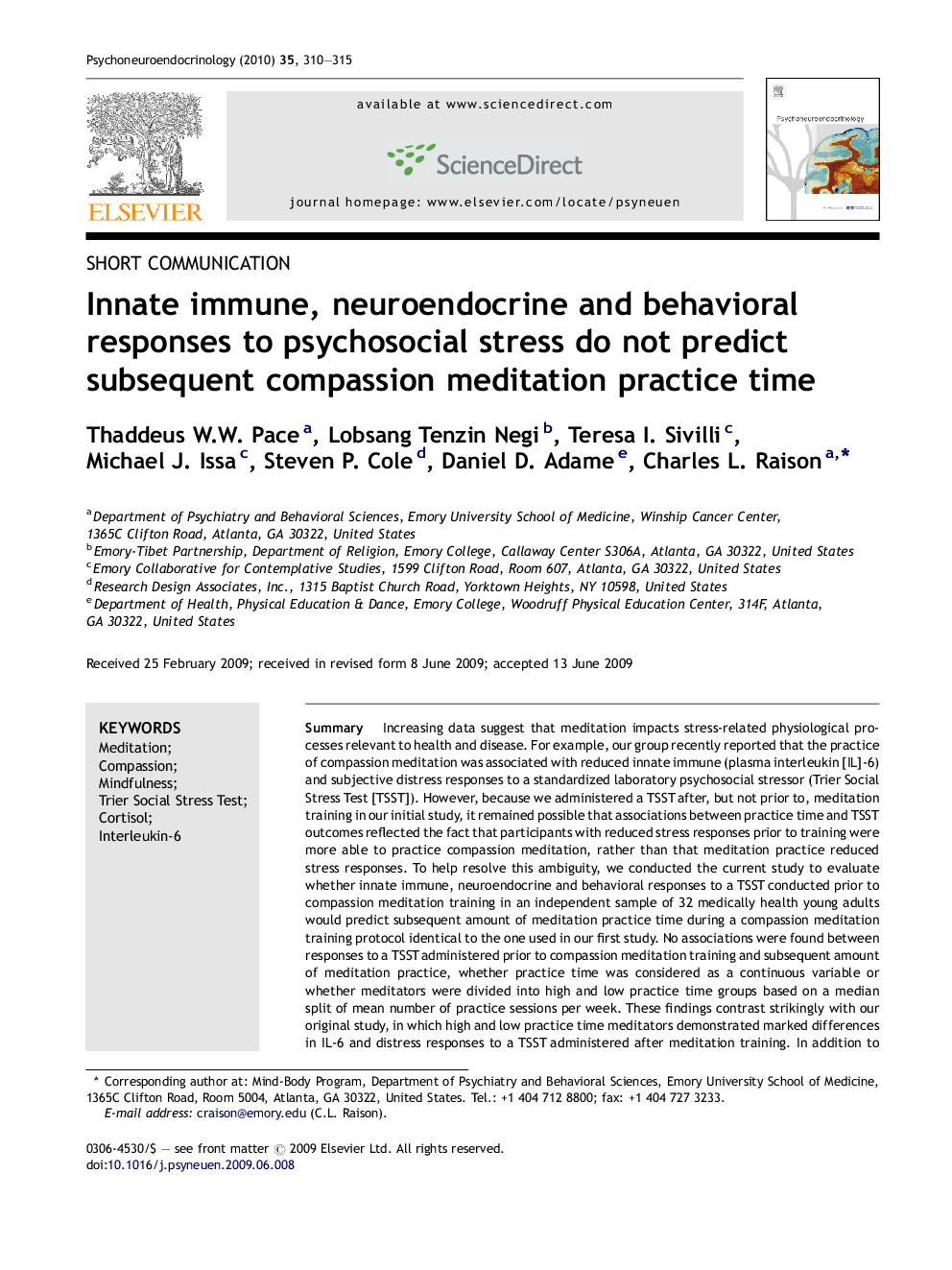| کد مقاله | کد نشریه | سال انتشار | مقاله انگلیسی | نسخه تمام متن |
|---|---|---|---|---|
| 336707 | 547189 | 2010 | 6 صفحه PDF | دانلود رایگان |

SummaryIncreasing data suggest that meditation impacts stress-related physiological processes relevant to health and disease. For example, our group recently reported that the practice of compassion meditation was associated with reduced innate immune (plasma interleukin [IL]-6) and subjective distress responses to a standardized laboratory psychosocial stressor (Trier Social Stress Test [TSST]). However, because we administered a TSST after, but not prior to, meditation training in our initial study, it remained possible that associations between practice time and TSST outcomes reflected the fact that participants with reduced stress responses prior to training were more able to practice compassion meditation, rather than that meditation practice reduced stress responses. To help resolve this ambiguity, we conducted the current study to evaluate whether innate immune, neuroendocrine and behavioral responses to a TSST conducted prior to compassion meditation training in an independent sample of 32 medically health young adults would predict subsequent amount of meditation practice time during a compassion meditation training protocol identical to the one used in our first study. No associations were found between responses to a TSST administered prior to compassion meditation training and subsequent amount of meditation practice, whether practice time was considered as a continuous variable or whether meditators were divided into high and low practice time groups based on a median split of mean number of practice sessions per week. These findings contrast strikingly with our original study, in which high and low practice time meditators demonstrated marked differences in IL-6 and distress responses to a TSST administered after meditation training. In addition to providing the first published data regarding stress responsivity as a potential predictor of subsequent ability/willingness to practice meditation, the current study strengthens findings from our initial work by supporting the conclusion that in individuals who actively engage in practicing the technique, compassion meditation may represent a viable strategy for reducing potentially deleterious physiological and behavioral responses to psychosocial stress.
Journal: Psychoneuroendocrinology - Volume 35, Issue 2, February 2010, Pages 310–315